Vanen, plumes from paradise (2009)
Lost on the fringes of Indonesia, the small Aru archipelago has fascinated merchants and scientists for centuries. In its forests dwells a flamboyant wonder known as the Greater Bird-of-Paradise, one of the most beautiful birds on earth.
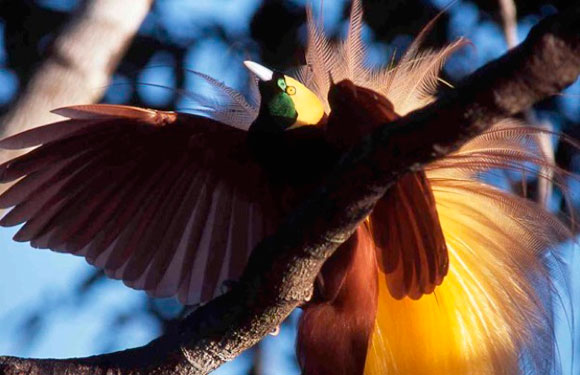 It's five o'clock in the morning. Sitting quietly in my tiny hide perched at 40m up in a tree, I look through the lens of my camera. Nothing. The Aru forest is already awake but not all its dwellers have started their day. I'll have to wait some more. And then, all of a sudden they're there, right in front of me, arriving with hardly a sound, perhaps a little rustling of feathers. My vanen.
It's five o'clock in the morning. Sitting quietly in my tiny hide perched at 40m up in a tree, I look through the lens of my camera. Nothing. The Aru forest is already awake but not all its dwellers have started their day. I'll have to wait some more. And then, all of a sudden they're there, right in front of me, arriving with hardly a sound, perhaps a little rustling of feathers. My vanen.
Since 2001 I've been chasing these vanen – the Greater Bird-of-Paradise (Paradisea apoda) – who perform their feathery ballet high up in the canopy. The males choose the same branches for their dances, year after year. I'm haunted by their Wok-wak-wak-wak call and I feel the obsessive urge to photograph and film it all. This obsession allowed me not only to witness these birds, but also to meet the wonderful inhabitants of Wakua, a village of Aru.
Aru, the beginning of the world
The tiny Aru archipelago lies between Australia to the south, and New Guinea to the east. It's a cluster of islands beyond time, beyond tourist guides, and also beyond the habitual pathways. Yet this archipelago of 6,500 km2 with barely 50,000 people of mainly Melanesian origin enjoys an exuberant natural environment. Apart from an abundant forest rich in timber and animals of all kinds, the rivers and seas provide the essential resources for the archipelago, such as fishing, pearl and agar-agar cultivation. From Ambon, Pelni ships and Merpati flights irregularly reach Dobo, the main city of Aru.
Wakua, Aru's heaven
Wakua, a village three hours drive away from Dobo, lies on the edge of the Manumbai channel and harbours a community of about 1300 people whose main activities are hunting, fishing and land cultivation. The staple food is sagu, an insipid yet nourishing flour which is extracted from the sago palm.
Wakua is the place where everything started. Through the years, I've established close relationships with the villagers, especially with the members of the two main clans, the Karey and Mangar. Mutual confidence and trust have allowed me to become one of them. And gradually, while paddling our canoes along the rivers, they shared their legends and tales with me. At night, in the darkness around the fireplace, in the middle of the forest, they furtively whispered ancient tales and secrets. This way, I began to get a picture of why the Greater Bird-of-Paradise means such a great deal to the Arunese.
"At the dawn of the world", Erasmus (64) told me once, "one of the ancestors of the Aru people was breeding vanen and swallows in his home. One day, his mother was tired of cleaning the birds' droppings and chased the birds away with her broom. The swallows were so ashamed that they hid in a cave and the vanen flew to the the tree tops. Since then, we have to go deep into the bowels of the earth to collect the swallows' nests or to climb high up in the trees to shoot the birds-of-paradise with our arrows. But to shoot birds, there should be enough of them in our land. I'm the last one in Wakua who knows how to call them. Come again next year, adik, and bring some gold dust along and I'll show you". And one day he did.
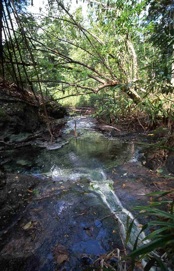
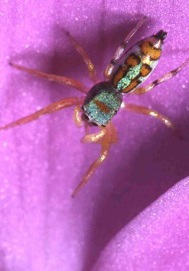
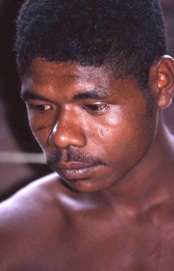 Vanen, the legless bird
Vanen, the legless bird
The Greater Bird-of-Paradise is certainly the most emblematic representative of the Paradisaeidae family. It is one of the first species to reach Europe in the 16th century and the first one to be described scientifically. Local custom held that the legs should be cut off before selling them to the Europeans, which in the West led to the belief that these birds were legless.
Furthermore, it was told that these "Birds of God" were forever on the wing, lived on dew and fresh air, rested on the clouds, bred and hatched their eggs whilst in flight. In his Natural History, Buffon regards all this as "a pack of gross errors!" Legends, however, were tenacious, and mistaken beliefs deep-rooted. In 1758, in his classification of the Greater Bird-of-Paradise, Linnaeus was influenced by these beliefs and named it Paradisea apoda, a legless bird whose colours could only come from paradise, a divine creature.
Paradisea apoda is a frugivorous bird. It eats mostly wild nutmeg, and sometimes insects. It is found in Indonesia and Papua New Guinea. Three other species of Paradisaeidae live in the Aru Archipelago, amongst them the King Bird-of-Paradise, locally known as gobi-gobi, whose male displays a brilliant vermilion plumage.
In the Manumbai language spoken in Wakua, the Greater Bird-of-Paradise is known as vanen (the "v" is pronounced "f"). Depending on the age, however, males have different names.
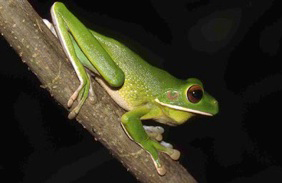
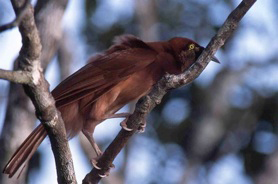 Sexual selection
Sexual selection
Like all Birds-of-Paradise, it's the drably coloured female who chooses her mate. She selects the male for the splendour of his dance and plumage, signs of good quality and health. By natural selection, the males have developed their extraordinary looks and subtle dances and they compete to gain the attention of the entire harem. It's a show regulated by a strict choreography that they repeat day after day. First they take the upright wing pose. Then, when the females approach, the charging display follows. The males keep their bellies attached to the branch and hop up and down. The static display is the most spectacular: the male returns head down and covers his entire body with orange plumes. If a female approaches and gives a sign she has chosen him, the frontal display takes place. The male raises his feathers like a peacock and crouches towards the female. If she stays, the male embraces her with his wings and then, in a few seconds time, the couple mate. And then the ballet starts all over again, from May to October, when the wind blows from East.
Plumes for hats, ... or heads of police!
The Greater Birds-of-Paradise drastically decreased in numbers when they started to be heavily hunted down for their plumes, a great asset for the European hat market at the end of the 19thcentury. The decline of the population was further accelerated with the introduction of modern weapons. Traditionally, hunters would have to climb up trees and wait patiently, bow and arrow in hand, hidden in a hide made of leaves, built according to ancient rituals. Today, they shoot the dancing birds from the ground. A villager gets about $10 per bird, and a stuffed specimen can be resold for 20 to 30 times that price in Jakarta. However, most of the birds are sold to the local civil servants, military or police. This is one of the reasons why the law that forbids the vanen's trade, is hard to enforce.
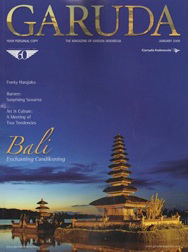
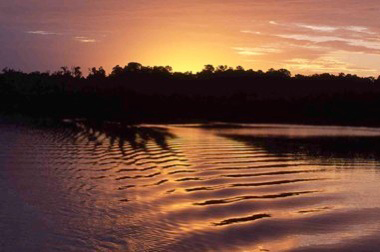
Sasi
In Badi Gaki, on Wokam Island, three hours away from Wakua, Erasmus Karey and his two brothers have decided to protect their vanen at their own initiative. During the 2007 Easter mass, the priest pronounced a "sasi" over the Badi Gaki's vanen. This religious customary law sternly warns anyone who dares to shoot the birds with the death penalty. And it works! Since then, not only the old adult males have been flaunting their plumage but others have joined them as well.
At nine in the morning, a last Wok-wak-wak-wak call resounds from far. My vanen have left the Badi Gaki hill to feed. I'm still sitting in my tiny hide, lost in thought, spellbound by the magnificence of these birds. Being in Aru is like travelling to the end of time. It's an immersion into the origin of life that flows like water through the channels that have formed the archipelago. It flows slowly, following the rhythm of the tides and monsoons.
"Vanen, Plumes from Paradise", a movie shot in the Aru jungle by Miguel A. Garcia & Loïc Degen
"Vanen, Plumes from Paradise" is a dual portrait of the vanen, the rare Greater Bird-of-Paradise, and photographer Loïc Degen. This film recounts his quest and his sixth expedition into the heart of the Aru jungle, in the extreme southeastern corner of Indonesia, along with seven friends from Wakua, a tiny village in the Archipelago.
Loïc has become one with the villagers. They confide in him and share their secrets. He's inexorably attracted by the legends and myths of a forgotten population, materially so poor, yet so rich at the same time. Their stories are enough to nourish indefinitely the quest of a 35-year-old man who still knows how to let himself be overwhelmed by the beauty, the subtlety and poetry of the creatures and the things that surround him.
Now available on DVD: 52min, 4 languages (French, English, Dutch, German (subtitled), 8 bonus (20min), slideshow, PAL, 16:9. To order: loicdegen@vilbrekprod.com. More info: www.vilbrekprod.com
Source
- Dijkman, G. & Loïc Degen - 'Vanen, Plumes from Paradise', in: The Magazine of Garuda Indonesia, January 2009; Photographs by Loïc Degen; Vilbrekprod; http://garudamagazine.com



